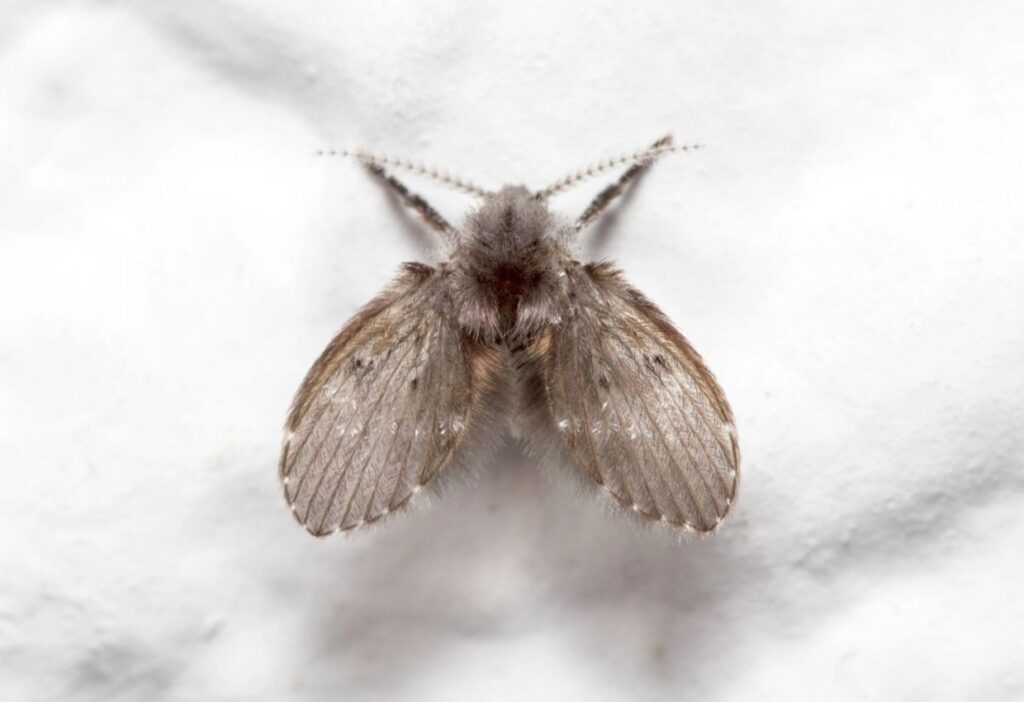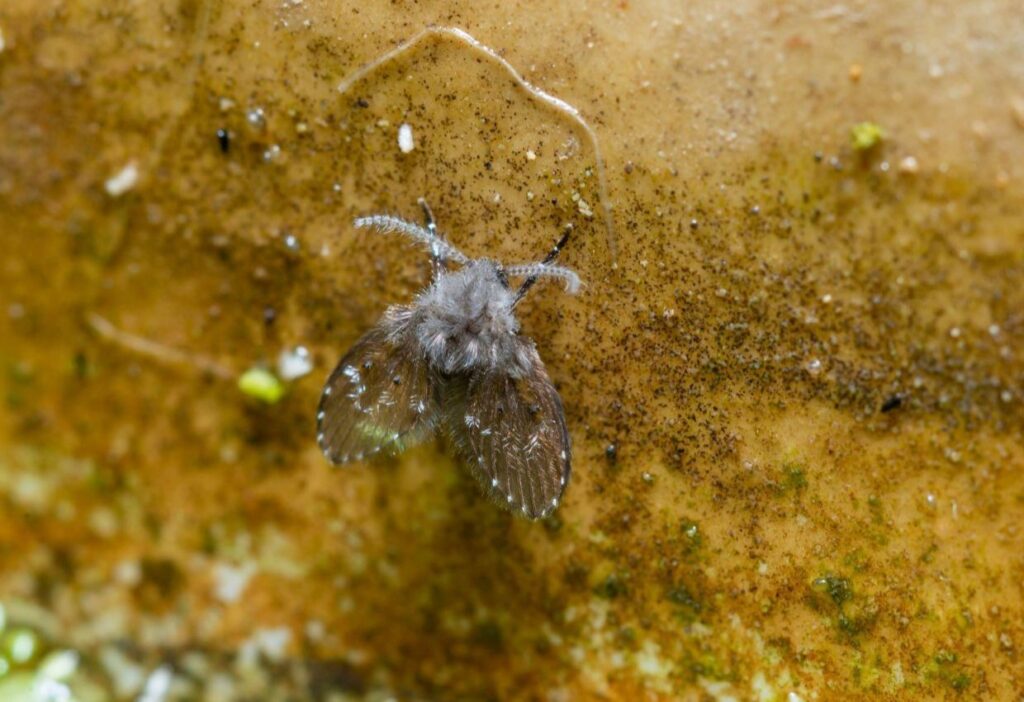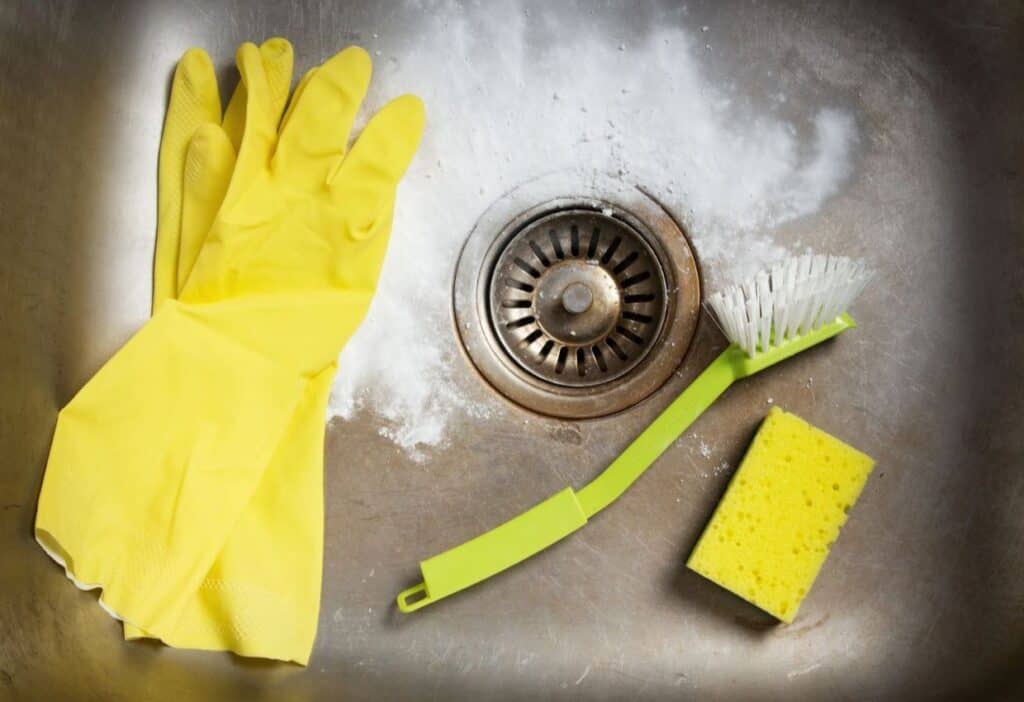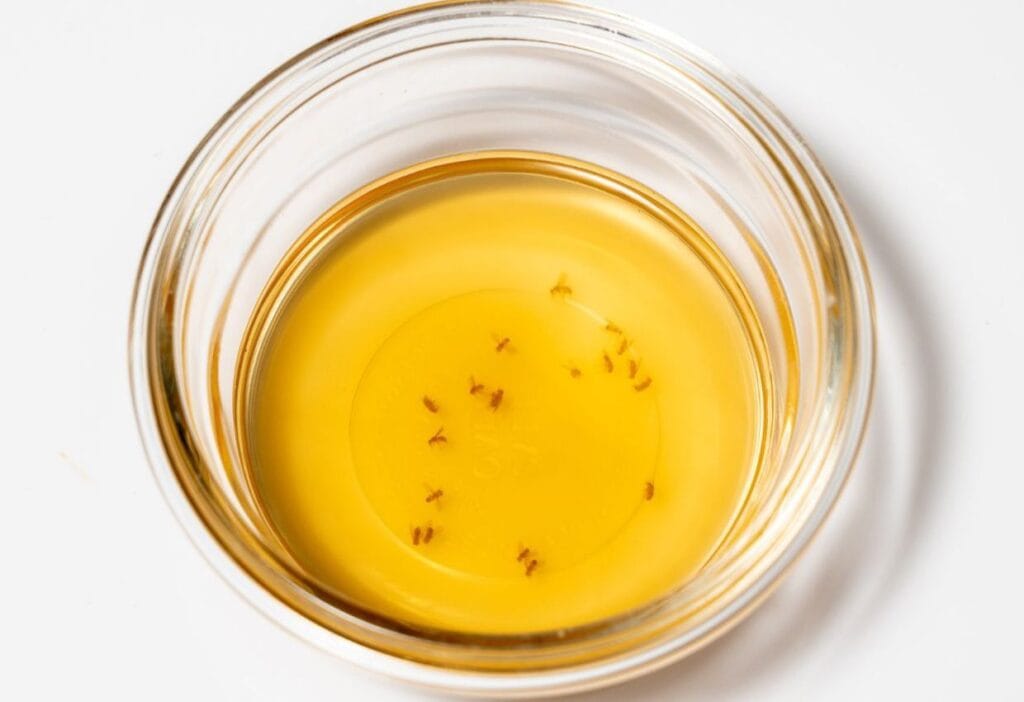You see those tiny insects that seem to appear from nowhere? They hover around drains and other damp areas, but do you know what they are? You can get rid of them with these simple tips.
These little bugs are also known as sink flies or moth flies, and they’re different from many pests you may be used to seeing. While not harmful, they can quickly become an unsightly and unhygienic problem if left unchecked.

What are drain flies?
Drain flies are small, moth-like insects that typically measure about 1.5 to 5 mm in length. They have a fuzzy appearance because their body and wings are covered in hair-like bristles. One of their most recognizable characteristics is their erratic flying pattern.
Drain flies are usually found near standing water or organic matter. They thrive in moist environments, making them a common sight in bathrooms, kitchens and other areas with drains.
These insects feed on the organic material that builds up in drains, such as soap scum, hair or other debris. While they don’t bite or transmit diseases, their presence can indicate an underlying drainage issue.
Are drain flies fruit flies?
While drain flies are often confused with fruit flies, they are two different species. Fruit flies are typically attracted to decaying fruits and vegetables, and they lay their eggs on these organic materials. In contrast, drain flies are drawn to moist environments and the organic sludge found in drains.
Fruit flies are slightly smaller and have smooth, hairless bodies, while drain flies have a fuzzy, moth-like appearance. Additionally, fruit flies are usually found near exposed food or garbage, whereas drain flies are more commonly seen near drains, sinks and areas with excess moisture.
Knowing the difference between the two species is important because it helps determine the best method for getting rid of them. While the presence of fruit flies can often be resolved by removing overripe produce and cleaning surfaces, drain flies require a different approach focused on removing the buildup in drains and pipes.
Where do drain flies come from?
Drain flies emerge from areas with stagnant water and decomposing organic material. They typically breed in drains, sewers, septic tanks and similar locations. In homes, they are commonly found in bathroom and kitchen drains, but they can also be present around garbage disposals, sump pumps or other areas with moisture.
Drain flies lay their eggs in the organic buildup found inside pipes or drains. These eggs hatch into larvae, which feed on the debris inside the drain. Once the larvae mature into adult flies, they begin to fly out of the drain looking for new areas to breed. This lifecycle can happen relatively quickly, allowing the population of drain flies to grow rapidly if not addressed.

How to get rid of drain flies
Getting rid of drain flies involves cleaning and maintenance, often using insecticides or natural remedies. Here’s a step-by-step guide to help you eliminate these pests from your home.
Clean your drains
The first step in getting rid of drain flies is to clean the drains thoroughly. Since drain flies lay their eggs in the organic material inside the drain, you must remove this buildup to eliminate the breeding ground. Use a stiff brush or drain cleaner to scrub away the grime and debris.
Pouring hot water down the drain can also help loosen any organic material. For more stubborn buildup, consider using a mixture of baking soda and vinegar. Pour about half a cup of baking soda into the drain, followed by half a cup of vinegar. Let it sit for 15-30 minutes before flushing the drain with hot water.

Use a drain gel or enzymatic cleaner
Enzymatic cleaners are designed to break down the organic material inside drains, making them an effective solution for getting rid of drain flies. These cleaners contain natural bacteria or enzymes that digest the debris clogging the pipes, eliminating the drain fly larvae’s food source.
You can apply an enzymatic cleaner or drain gel overnight, allowing it to work through the buildup in the pipes. For the best results, be sure to follow the manufacturer’s instructions.
Trap adult drain flies
While cleaning the drain addresses the breeding ground, it’s also important to remove adult drain flies that are already present. You can make simple traps at home using materials like vinegar or sugar water.
Fill a small dish with apple cider vinegar or sugar water, and cover it with plastic wrap, poking small holes at the top. The flies will be attracted to the solution, enter the trap and drown.

“Whenever we get drain flies, I will set a bowl of funky apple cider vinegar next to the drain with a squirt of dish soap added. This mixture does an excellent job of attracting and trapping the bugs. Usually, they’re all trapped within a day!”
— Michelle Goth, Blackberry Babe
Alternatively, sticky fly traps can be placed near drains to catch adult drain flies. Both these methods work equally well for fruit flies and drain flies.
Check for leaks and standing water
Drain flies thrive in areas with standing water, so inspect your home for leaks and moisture buildup. Check for leaky faucets, cracked pipes or slow-draining sinks, and repair these issues promptly.
Ensure that areas around the sink, bathtub or shower are dry, and avoid leaving wet towels or cleaning sponges near the sink. If you have outdoor drains, gutters or areas with poor drainage, make sure to clear them of debris and standing water to prevent drain flies from breeding.
Are there natural remedies for drain flies?
If you want to avoid chemical cleaners or insecticides, several natural remedies can help control drain flies. As noted, baking soda and vinegar can help clear organic buildup in the drain. Additionally, you can use a mixture of boiling water and salt to flush the pipes and eliminate larvae.
Essential oils like peppermint or eucalyptus are also known to repel drain flies. Mix a few drops of essential oil with water in a spray bottle, and use it to treat areas around the sink or drain.
For persistent infestations, consider using a vacuum to remove adult flies from the area. Be sure to empty the vacuum bag or canister promptly to avoid re-infestation.
Now that you know what to do, go tackle them
Drain flies are a common household nuisance, but they can be effectively eliminated with the right approach. Cleaning your drains thoroughly helps remove the organic material that attracts these pests. Your efforts should be consistent, whether you use enzymatic cleaners, natural remedies or a combination of both.
Michelle Price is a food and travel writer at Honest and Truly who almost has an empty nest. She loves to provide both the inspiration and the confidence you need to help get you into the kitchen and on the road to enjoy new flavors and experiences.